Community Rewilding
#Northwoods
Spearheaded by the Mull and Iona Community Trust, ambitious plans are underway to transform Ardura's dark conifer plantations into a vibrant community woodland, expanding this precious part of Scotland’s rainforest and restoring the link between local people and these ancient oak woods.
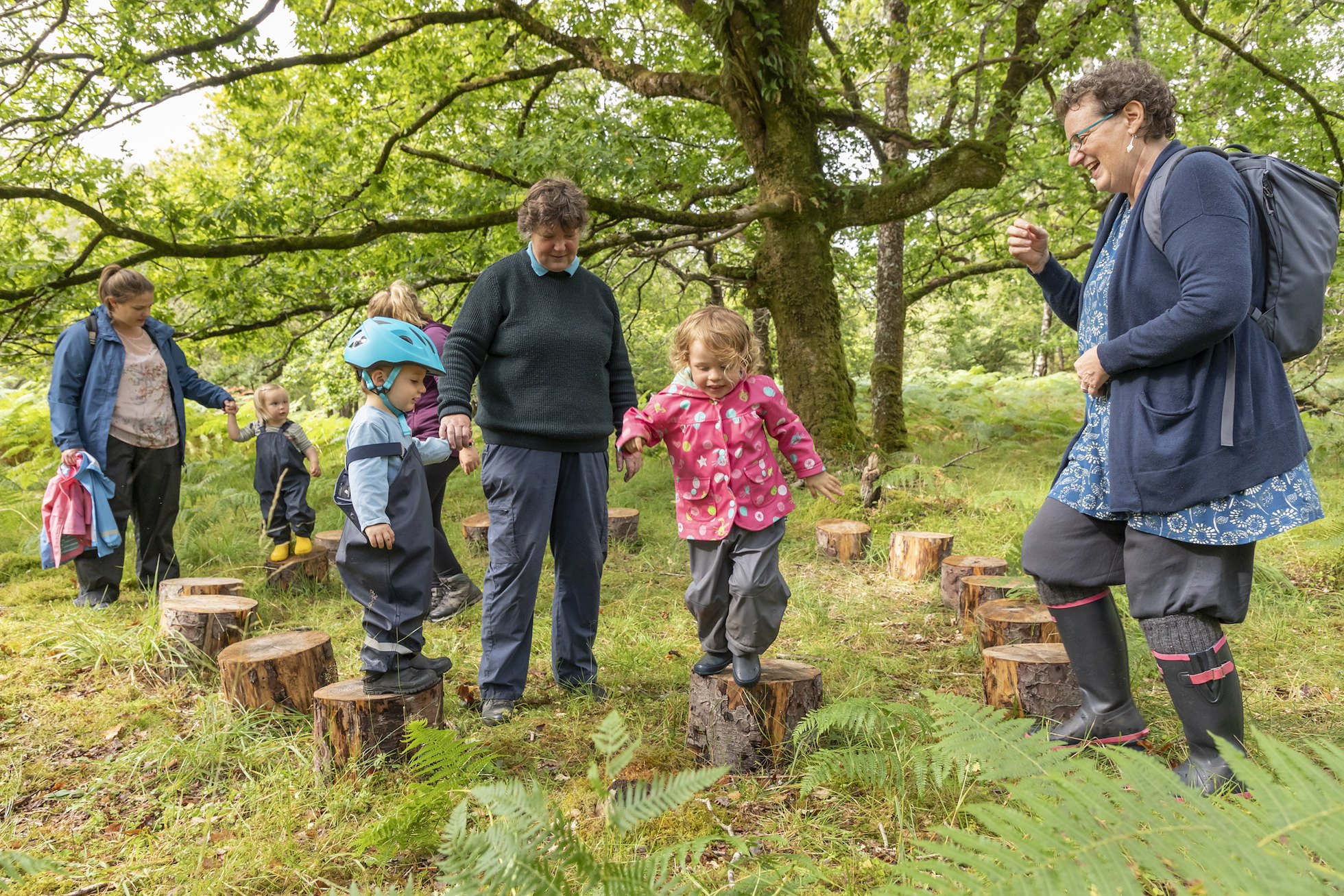
Plans to purchase Ardura Forest relied on delivering community benefits. Already, it is doing just that.
Moray Finch likes to say yes. As general manager of the Mull and Iona Community Trust (MICT) he has backed all sorts of projects over the years. A new hydro scheme? Yes. More affordable housing? Yes. Community transport services? Yes! However, when the community were offered the option to buy 201 hectares of woodland, he was initially minded to say no. Buying a woodland wasn’t part of the trust’s strategic plans and they had no experience of forest management. It felt like too big a risk, both financially and reputationally, with many unknowns. The whole idea took him out of his comfort zone.
“Luckily, one of our board members pushed us to explore the potential of the purchase,” reflects Moray, speaking to me from his Craignure office. “If they hadn’t, we might have really missed out.”
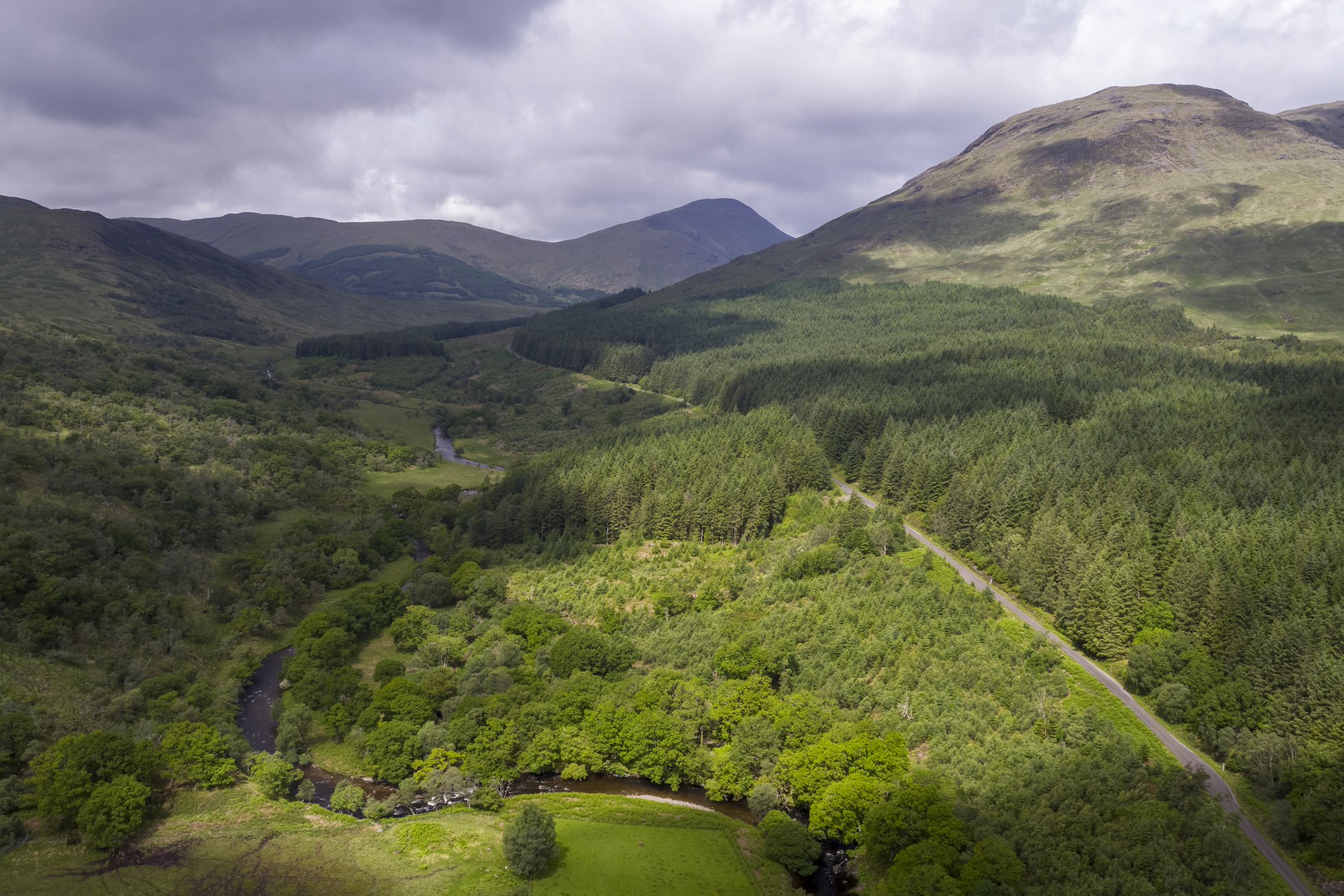
Ardura Community Forest lies to the north of the river Lussa, on the east side of Mull. Once a rainforest dominated by holly and oak, much of the woodlands were cleared in the 1960s to make way for non-native commercial plantations.
Established in 1997, MICT are proud of creating Scotland’s first community-run ranger service, and of their role as a founding member of Mull Eagle Watch – the proceeds of which fund a full-time ranger salary for six months of the year and a community grant scheme. But despite the tourists they attract and the jobs they support, Mull’s white-tailed eagles remain controversial. For some within Mull’s farming and crofting community, official scepticism about the losses and challenges they face from the eagles, along with a perceived lack of action to mitigate this conflict, has established a lasting suspicion of badge-wearing conservationists. Rewilding is still a sensitive subject on Mull.
All this meant that any plan for the community to purchase Ardura Forest would need to prove more than just financially sustainable and environmentally responsible - in line with the trust’s ethos, it would need to deliver tangible community benefits too. Happily, it is doing just that. After the purchase, MICT auctioned off the standing timber from non-native plantations covering most of the site, with surplus funds to be invested on the island. The first project to be considered for funding was the expansion of Tobermory’s Nonhebel Business Park, built to address the lack of storage and small business premises in North Mull. It opened in March 2020, just as Covid hit – “at possibly the worst time in history to launch a business,” muses Moray – but is already fully occupied, with demand for units exceeding supply. Moray hopes money from the timber sale will also support development of more affordable housing, a longstanding challenge facing the community.
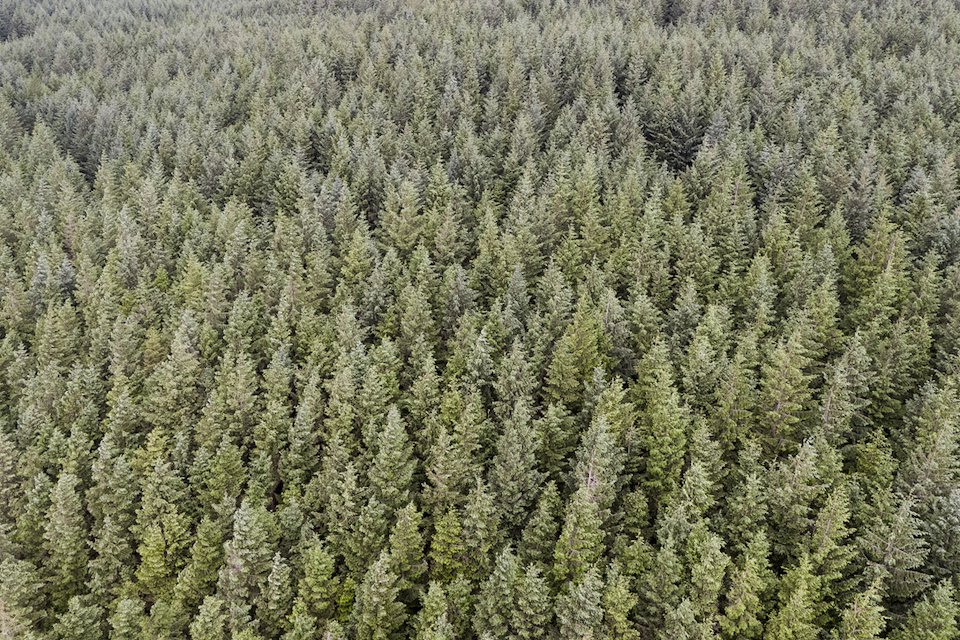
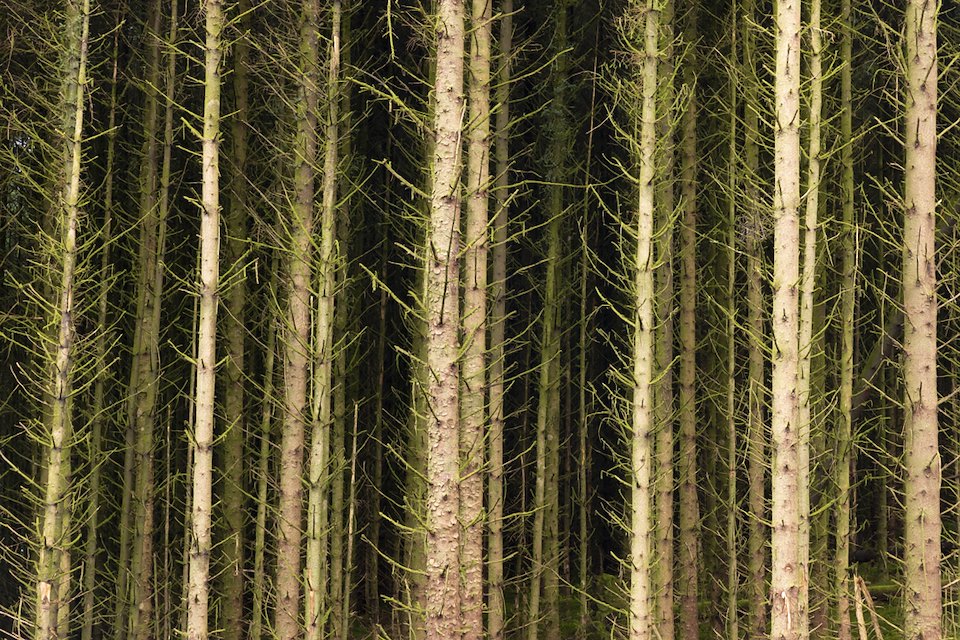
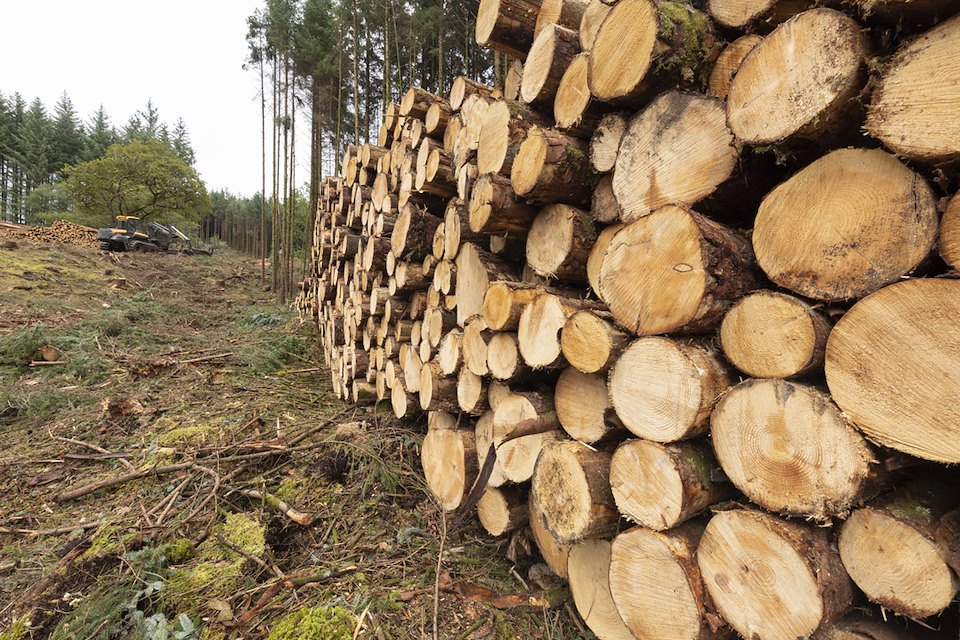
By April 2022, 70 hectares of Ardura’s exotic conifers will have been harvested, providing significant income for other community projects across Mull. These non-natives along with invasive rhododendron will be replaced with native broadleaves as the forest begins its ecological recovery.
Meanwhile, the forest itself – now known as Ardura Community Forest – is thriving, and felled areas are being replanted with native trees to expand existing fragments of ancient woodland, connecting Ardura with remnant oak woods growing across the River Lussa. Ardura is known in Gaelic as “Doire a’ Chuilinn”, which translates as “The Grove of the Holly”, and the forest still supports a few ancient hollies and gnarled old oaks. Moray describes one of these ancient oaks with custodial pride – a huge forked tree with one great limb beginning to rot, filled with wood-boring insects and bearing large bracket fungi, while its companion limb continues to grow, green and vital, decked with moss and lichen. At the crux of this fork, a bowl of fertile humus has collected, sprouting new life in the form of rowan, birch and holly.
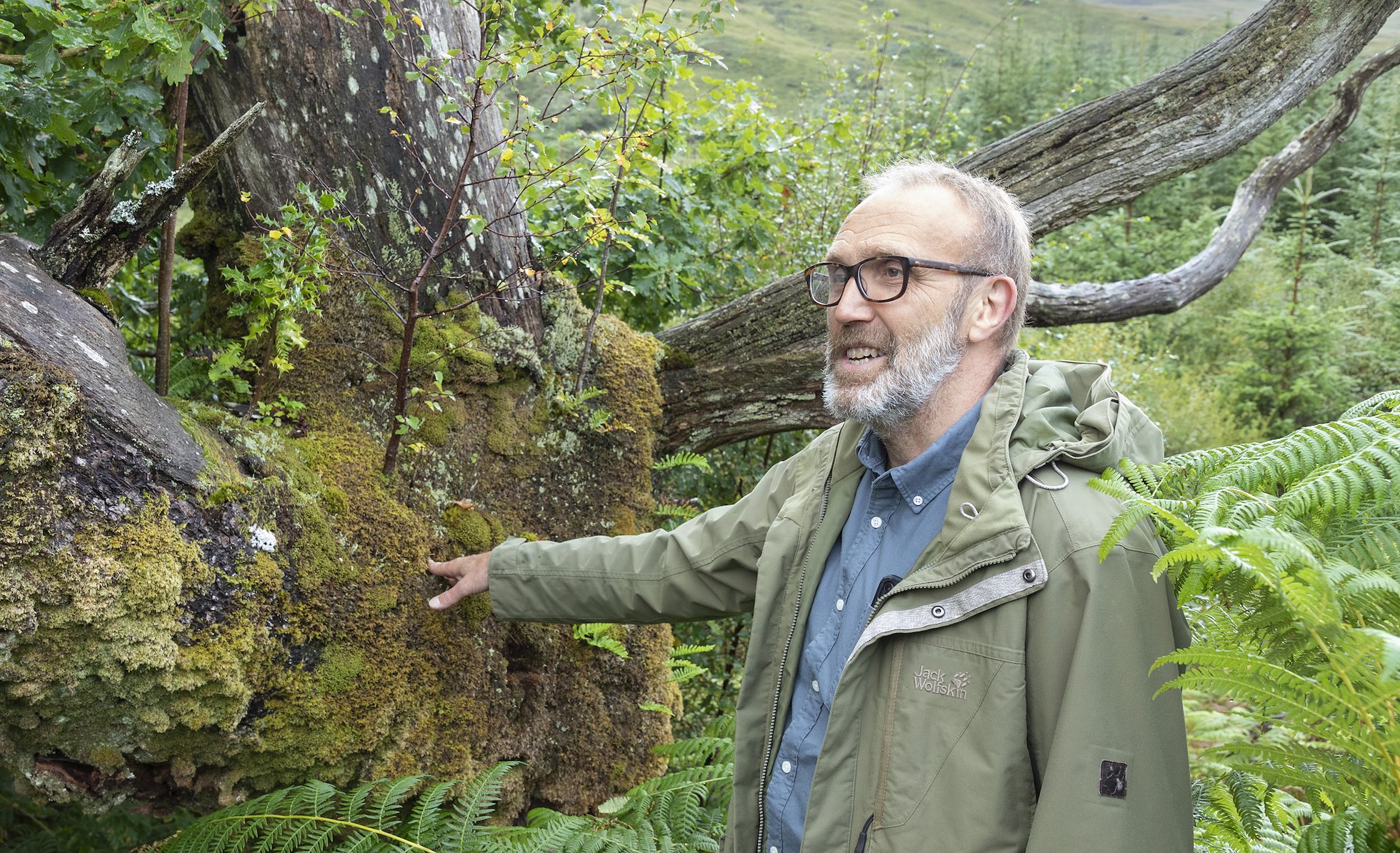
Moray Finch, General Manager of the Mull and Iona Community Trust stands proudly beside one of Ardura’s oldest oaks, from which a new generation of saplings has taken root.
Saplings aren’t the only young lives reinvigorating the old forest. Already, local children attend the Ardura Acorns outdoor toddler group, managed by Community Wellbeing Project Officer, Rachel French. She and ranger Jan Dunlop supervise sessions with the toddlers once a week, running scavenger hunts, painting with mud, or enjoying a hot chocolate under the shelter of an old tree. Rachel describes watching the kids come out of their shells, getting dirt under their fingernails and growing in confidence as they explore the forest or splash in the shallows of the River Lussa with their parents.
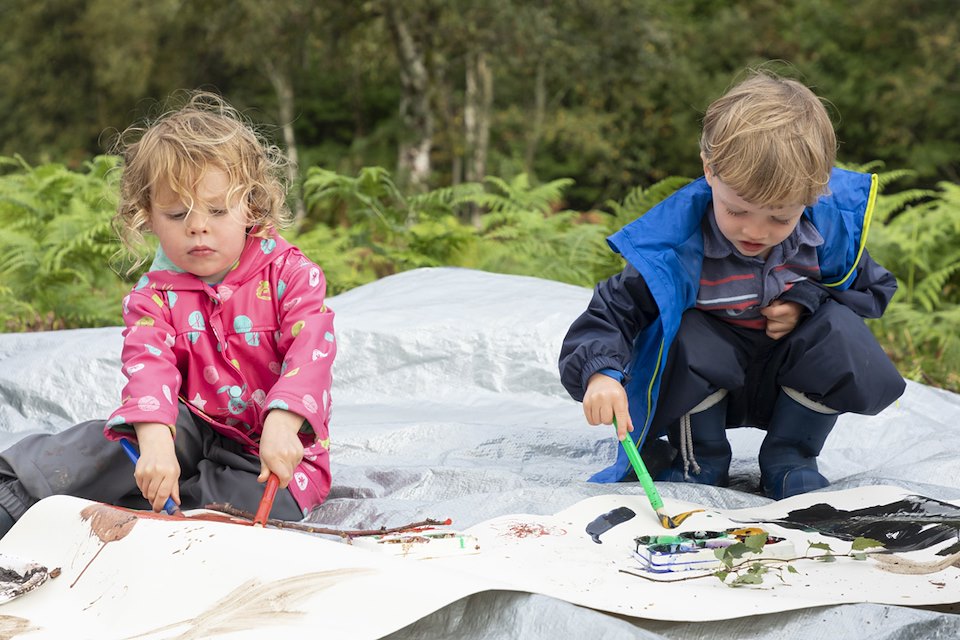
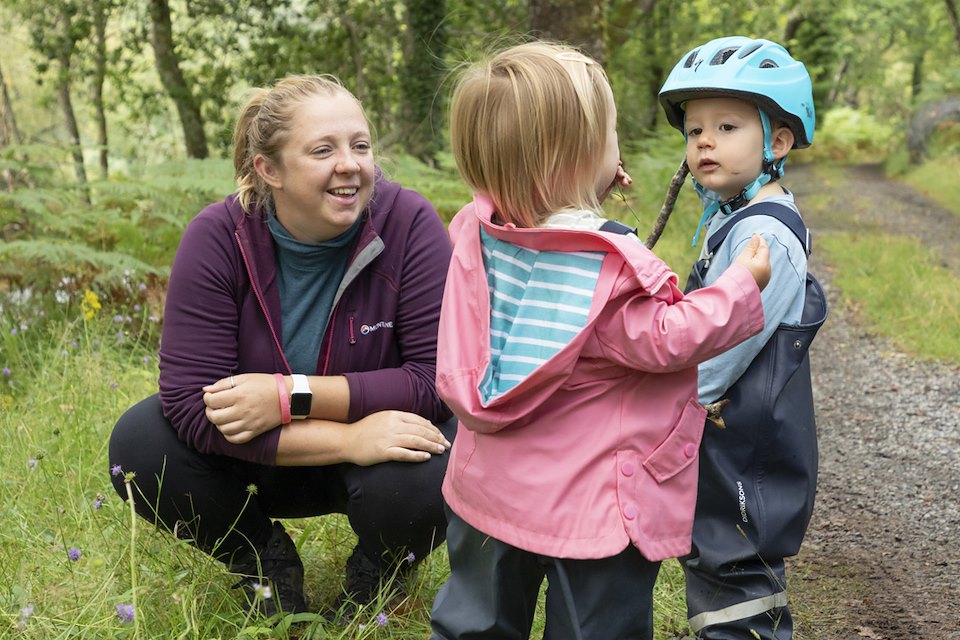
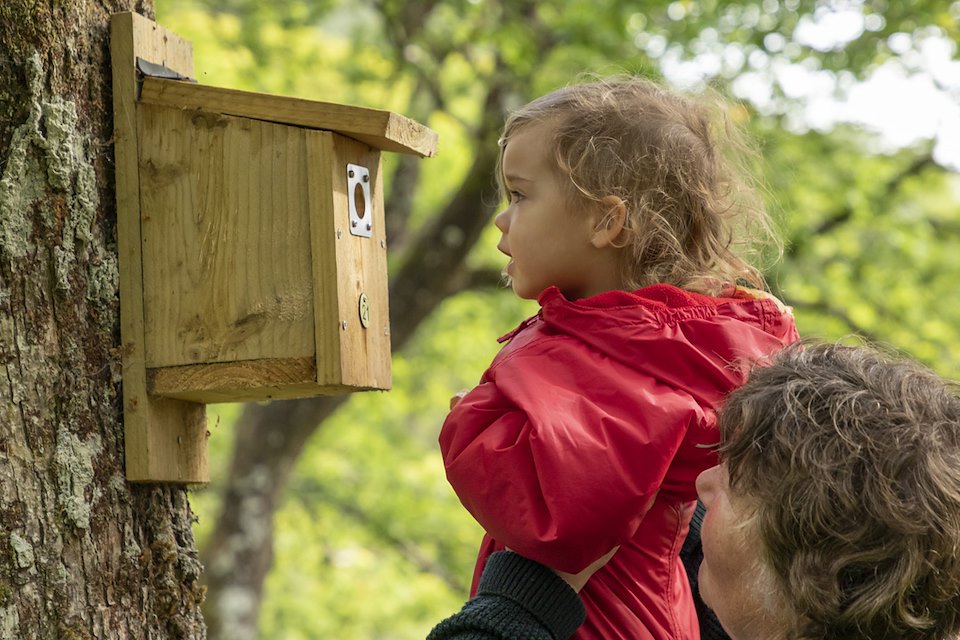
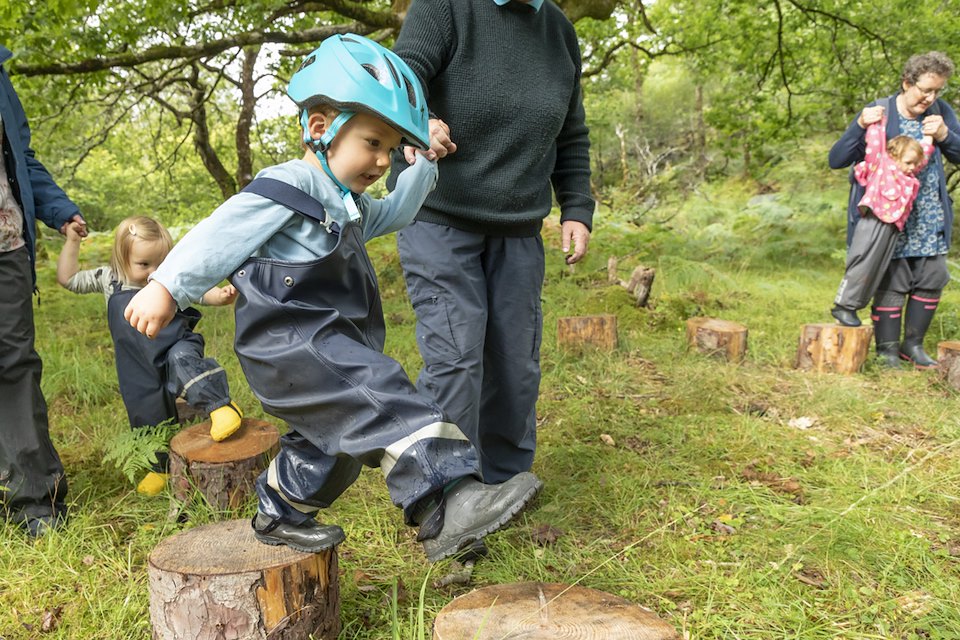
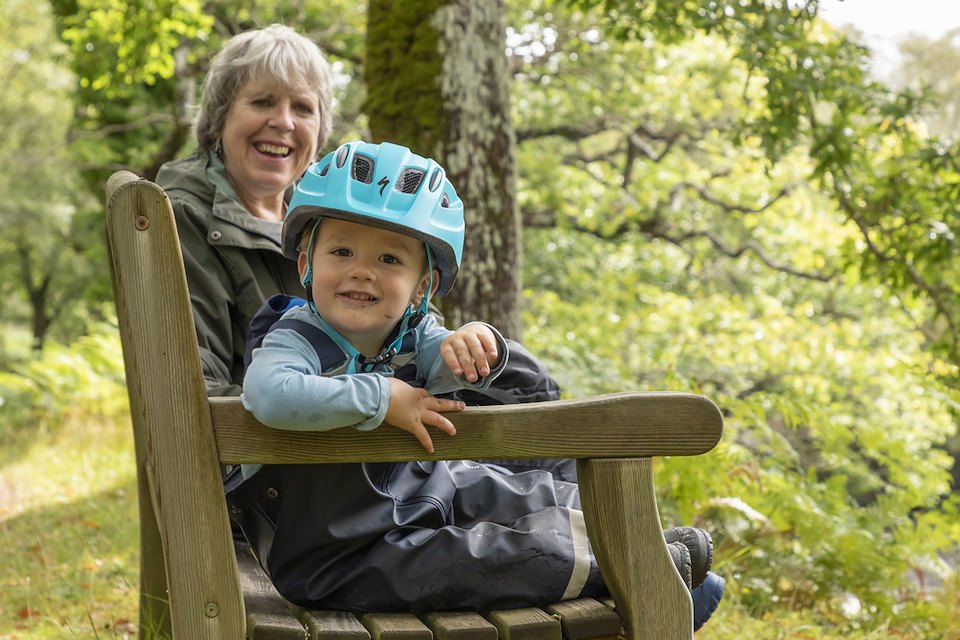
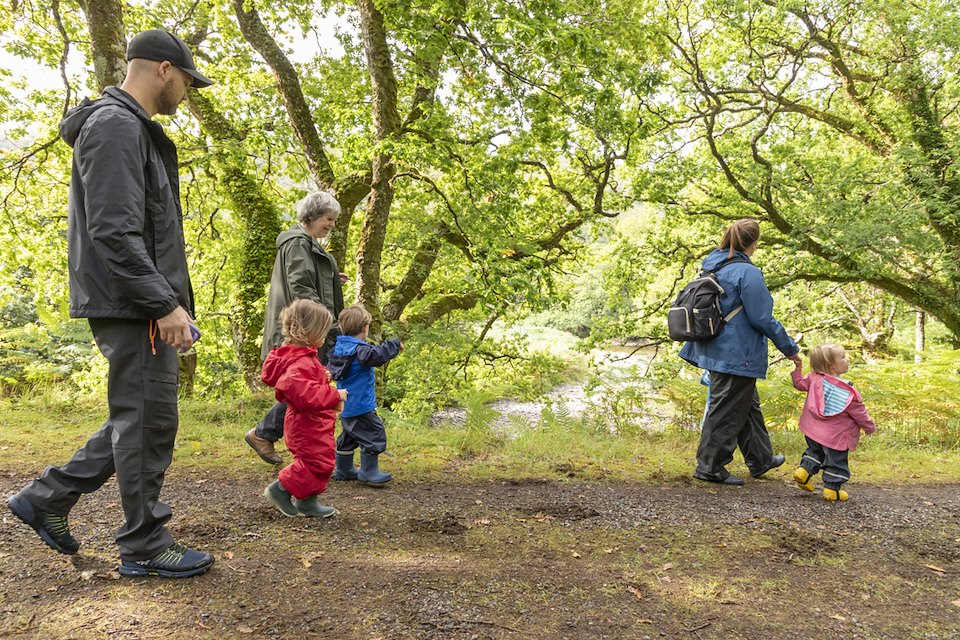
Toddlers, parents and grandparents from the local community enjoying a morning of activities amongst ancient oaks that will soon be joined by thousands of saplings grown in a local nursery from seeds collected on site.
Older kids from Lochdonhead Primary School are also regular visitors and have begun planting trees as part of the Green Tree Schools Award run by the Woodland Trust. They add their names to the trees so they can follow them through the seasons, creating an organic link between these local youngsters and the future forest. There are plans to get older students into the forest too, as well as adults involved with Mull Safe and Sound, a local support group for those feeling socially isolated or vulnerable. Ardura already hosts regular “forest bathing” sessions, with movement and mindfulness in the woods used to boost health and wellbeing. Another project has seen the old road running through the forest – part of the historic Iona to St Andrews Pilgrim’s Way – carefully restored, creating a popular multi-use woodland track. Rachel French sees it as her role to “get as many people into the forest as possible” to share the benefits of this evolving community space.
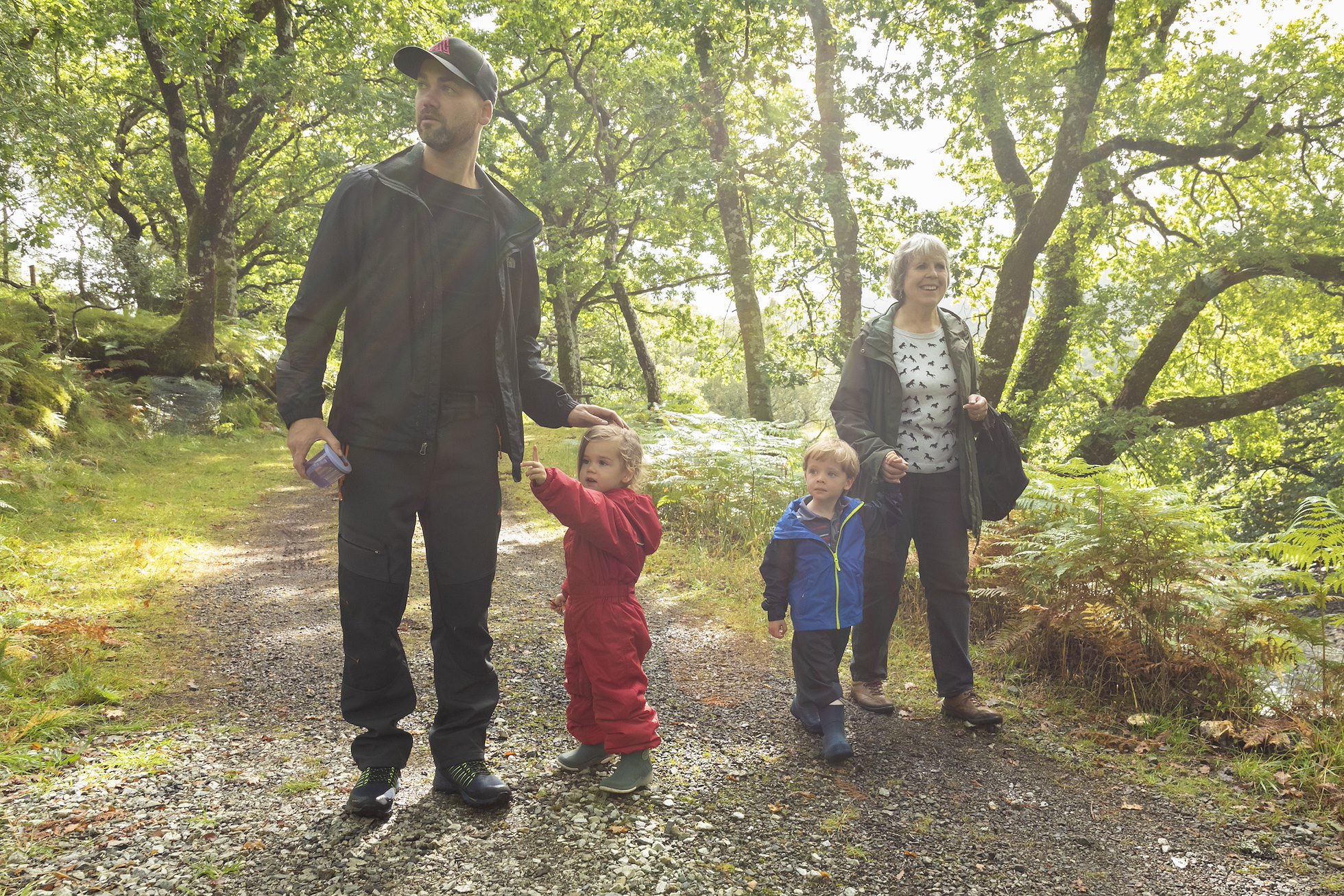
The old riparian path that had become unusable has now been cleared to provide access for all through the forest, allowing many more people to enjoy the sights, sounds and smells of the oakwoods.
Having once viewed the forest purchase as politically fraught and a potential liability, Moray has grown almost evangelical in his enthusiasm for the ecological restoration of Ardura and the diverse benefits the recovering forest is delivering. Moray also feels more comfortable today endorsing, and even championing, rewilding. It’s clear the Northwoods Rewilding Network – which Ardura recently joined – provides plenty of inspiration. The network facilitates peer-to-peer learning and knowledge exchange amongst a diverse collection of landholders, all motivated by a shared concern about the climate and ecological emergencies. Northwoods partners are an eclectic band, which includes farmers, crofters and community groups like MICT, but all have committed their land to the principles of rewilding, and many are reaping rewards already.
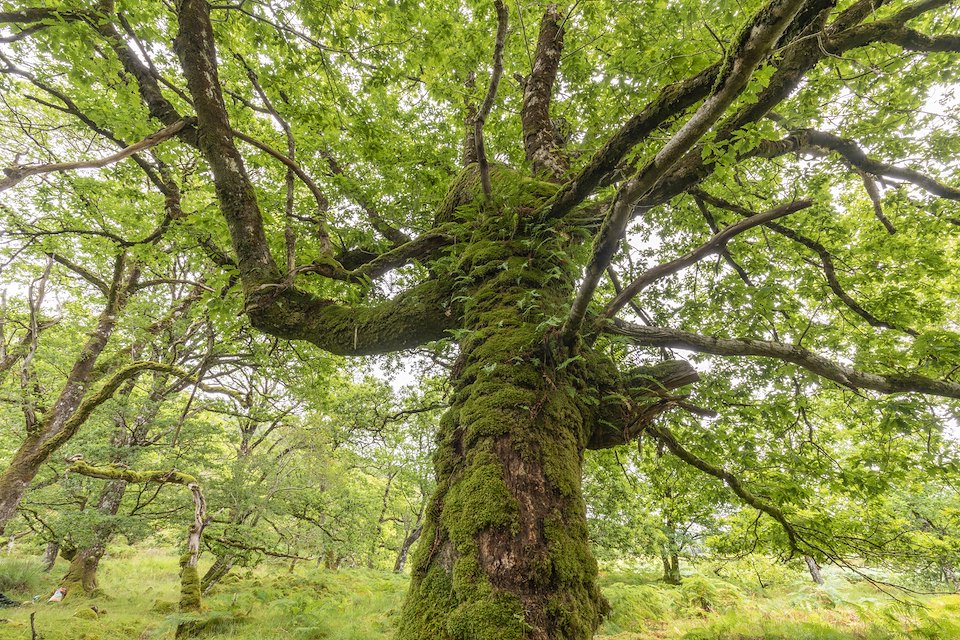
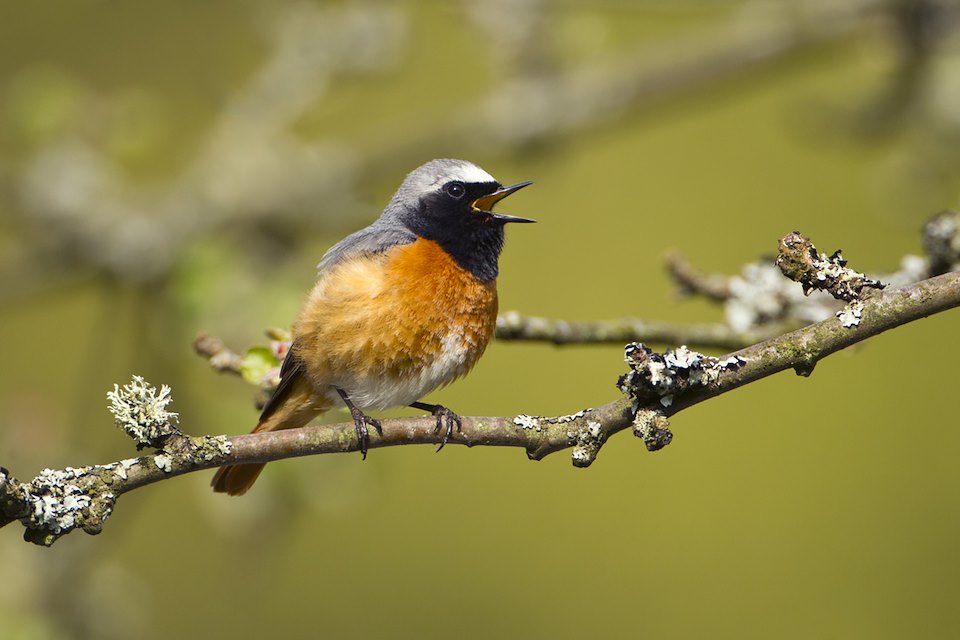
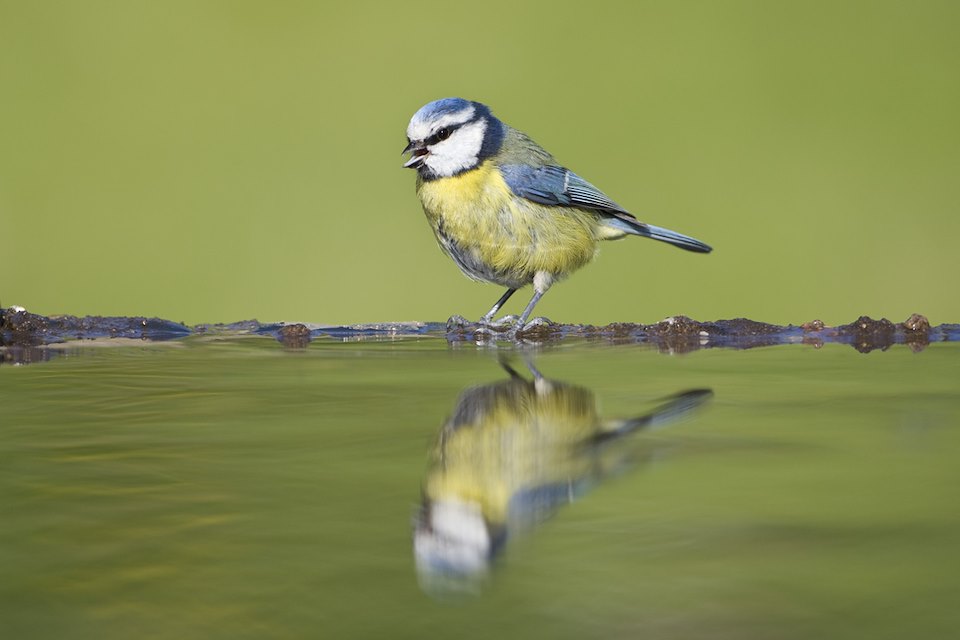
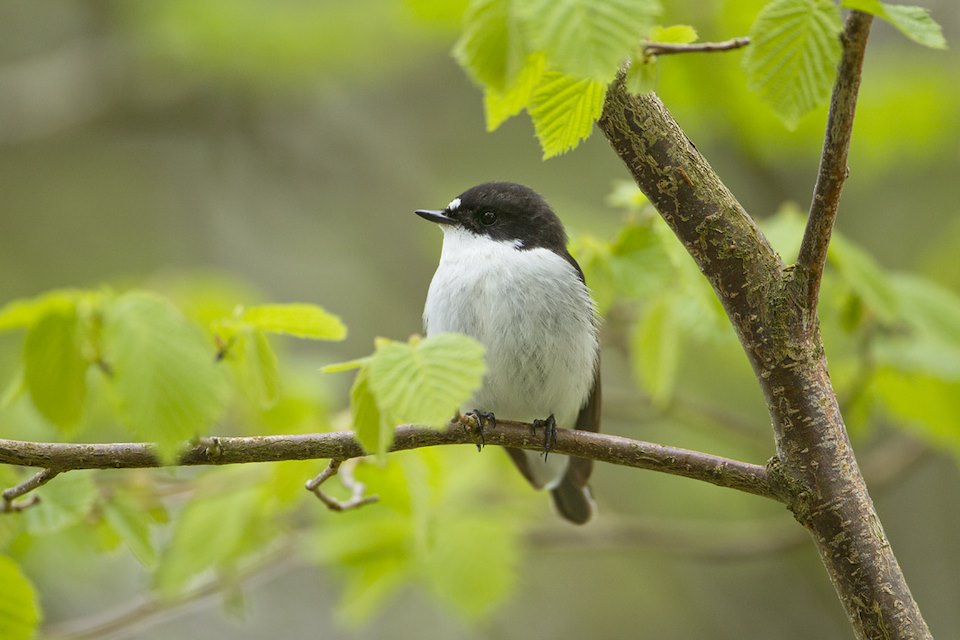
These centuries-old oaks harbour myriad mosses, lichens, ferns and other plants whilst recently erected nest boxes will attract woodland birds such as tits, redstart and pied flycatcher.
Moray hopes that MICT’s experience will encourage other communities to take a similar journey, and they are not the only ones with exciting work underway. At the Arkaig Community Forest in Lochaber, a mobile, community-owned venison larder is being developed as a new and sustainable model of food production. At Kinloch Woodlands in Wester Ross, the management team have been pioneers in developing a blueprint for community-led native woodland restoration. At Comrie Croft in Perthshire, a mixed private and community land ownership model supports a diverse mix of micro-regenerative enterprises, ranging from permaculture to eco-accommodation and environmentally-friendly weddings. Like the Langholm Initiative, where the community acquired 5,200 acres of land for rewilding from the Duke of Buccleuch, these community-led enterprises share an aspiration for people to thrive alongside the recovery of nature.
Looking ahead, Moray is excited by the idea of creating woodland pastures, and the potential for native livestock to recreate the ecosystem processes once driven by the browsing passage of extinct mega-herbivores. The wild aurochs (the predecessor of the domestic cow) may have gone for good, but it’s not hard to imagine that, should Ardura’s wooded slopes one day come to feed and shelter some of the island’s shaggy-coated Highland cows, enthusiasm for trees might begin to grow amongst Mull’s most hardened rewilding sceptics. After all, if the forest has taught Moray anything, it is the many benefits of being prepared to change your mind.
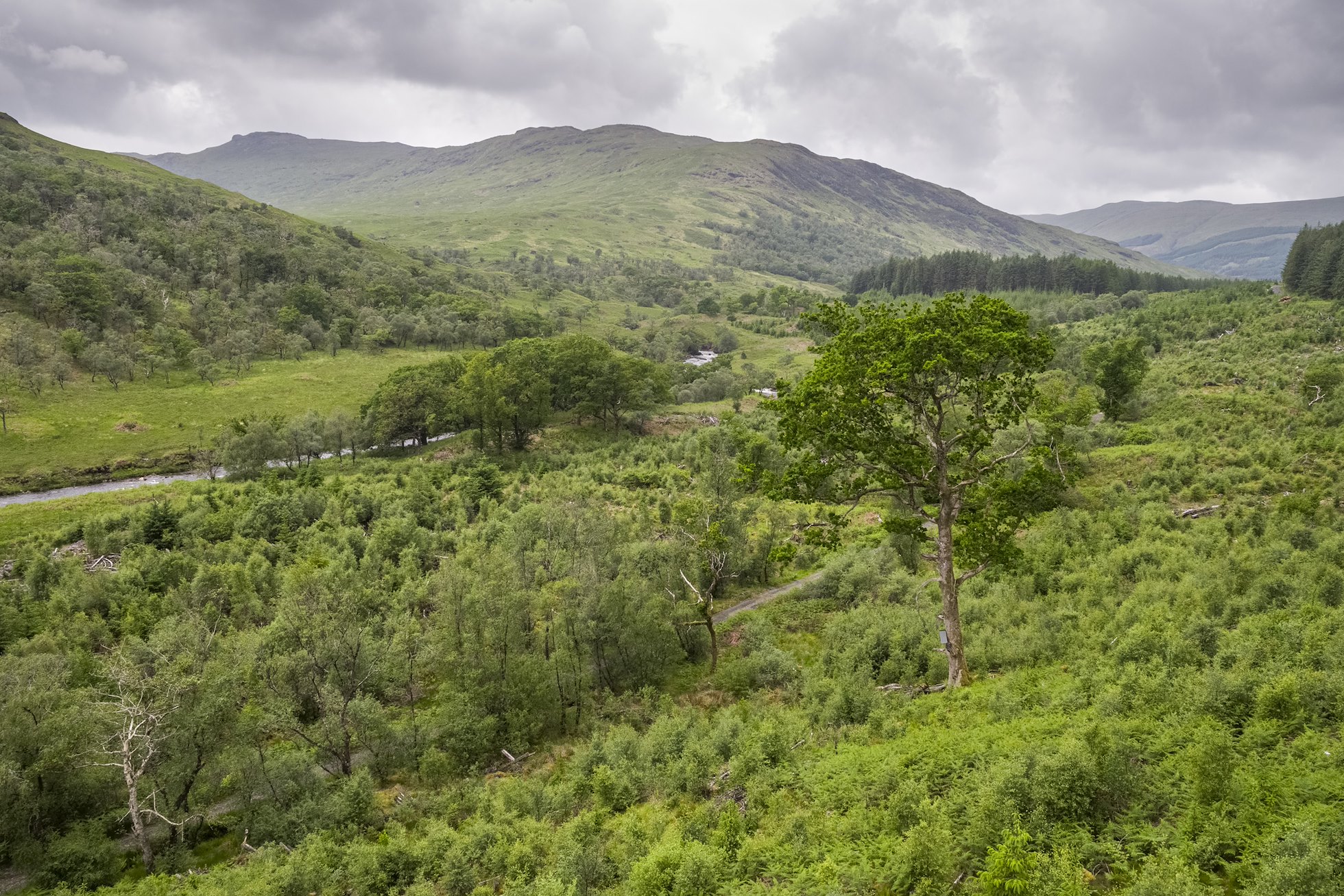
The young native trees now growing at Ardura will, hopefully, never be cut down. Left in place, they will lock up carbon for centuries to come. Nor will this recovering forest stand alone. Ardura Community Forest is bordered by Torosay Hills, where woodland flowers colour the bare hills, hinting at the landscape’s wooded past. Here, a 150-year vision is now in place to restore Mull’s remnant Atlantic rainforest, and across Scotland, more and more landowners, large and small, are adopting a similar rewilding philosophy.
Ardura is just one piece in a much larger jigsaw, but in today's fragmented landscape every piece is precious, and the benefits - for nature, for the climate, and for our communities - are only amplified when we join these isolated pieces together.
The individuals and communities in the Northwoods Rewilding Network are working together to develop and demonstrate many ways rewilding can benefit people and nature, creating and supporting human and non-human communities alike. As we face up to climate change, community rewilding is offering us one entirely positive sea change.

